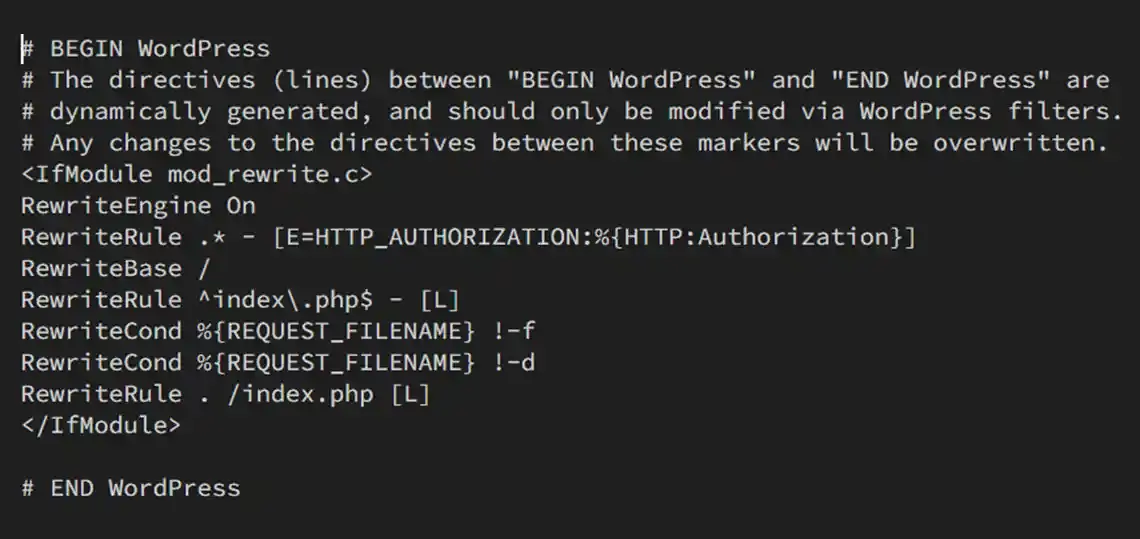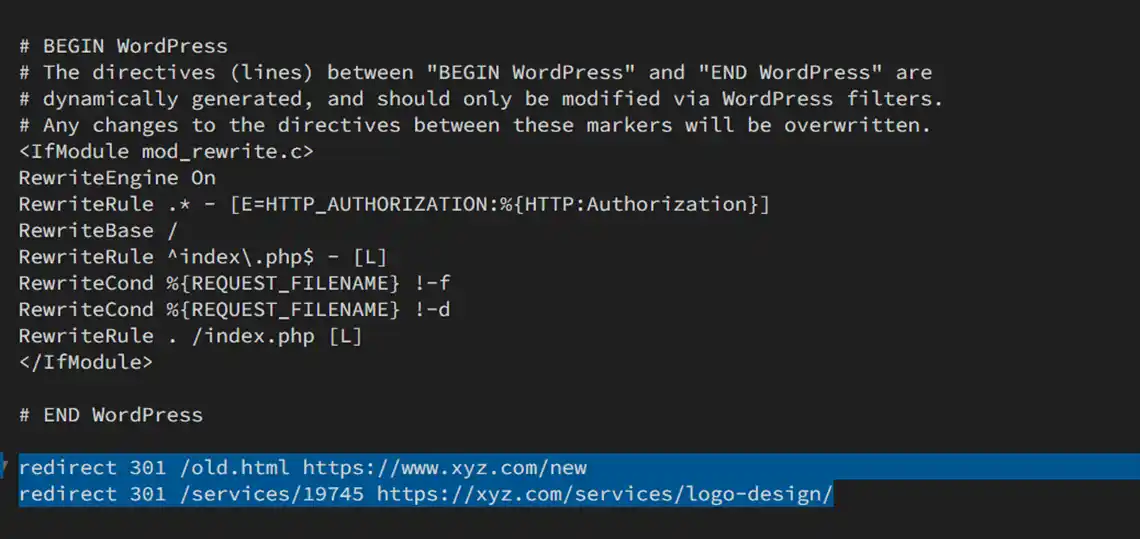
If you are new to web development and website maintenance, you should know that the .htaccess file is a powerful tool that plays a crucial role in the functionality and performance of a website. While it may seem like just an ordinary configuration file, the .htaccess file is the key to managing web server behavior that can enhance the user experience.
That said, let us explore what an .htaccess file is, what it is used for and why it is essential for website management.
What is an .htaccess File?
The .htaccess file is simply a config file (plain text) utilized by Apache web servers as a method by which server settings can be configured, on a per-directive basis. Thus, the “.htaccess” or “hypertext access” file, is placed within the “root” directory of a website or inside specific subdirectories to influence the behavior of the server and how it interacts with clients.
The .htaccess file enables website administrators to configure settings for a specific directory without requiring access to the main server configuration files. In this way, it permits the customization of how URLs are handled, how content is delivered and how unauthorized requests are managed, among other functions.
Structure of an .htaccess File
At its heart, the .htaccess file consists of directives or commands that are parsed and executed by the Apache server. Thus, each directive instructs the server on how to behave under certain conditions. For example, a simple command can redirect users from one URL to another or password-protect a directory.
The syntax utilized in an .htaccess file is fairly straightforward, but necessitates careful attention to detail. That is because even a small inaccuracy or typo, can lead to server errors or security vulnerabilities. Therefore, it is extremely important to understand the implications of the commands used in the .htaccess file to ensure optimal performance and security.
Key Functions of an .htaccess File
URL Redirection
Did you know that one of the most popular uses of an .htaccess file is something called, URL redirection? A URL redirection is essential for maintaining a seamless user experience during website redesigns or when website content is moved.
For example, if a web page has been moved or renamed, a 301 redirect can communicate to search engines and users, that the old URL has permanently moved to a new location (URL). This helps preserve search engine rankings and prevents broken links.
Custom Error Pages
A website that is well-managed should provide a positive user experience to all visitors, even if there are some website errors. Thus, the .htaccess file can help to achieve this goal, by enabling you to define custom error pages for different HTTP status codes, such as 404 (not found) or 500 (server error).
In so doing, the .htaccess file facilitates the introduction of informative and branded error pages. This in turn enables website owners and/or webmasters, to maintain user engagement while directing them back to relevant content.
Access Control
With the .htaccess file, website administrators can control access to specific directories or files. This includes setting up basic authentication to restrict access to sensitive areas of the website or to block specific IP addresses which can prevent malicious activity. This added layer of security is vital for protecting both user data and the integrity of the website.
URL Rewriting
Using mod_rewrite, webmasters can create user-friendly URLs that are easier to read and remember. This is particularly important for SEO (Search Engine Optimization) as search engines prefer clean and descriptive URLs. For example, a URL like https://xyz.com/services/19745 can be rewritten to https://xyz.com/services/logo-design/, improving both the user experience and search engine visibility.
Cache Control
Performance optimization is another crucial function that can be managed via the .htaccess file. It allows administrators to define caching policies, which help improve load times by telling browsers to cache certain files (such as images, CSS, and JavaScript) for a specified duration. This reduces server load and enhances the overall performance of the website.
Why is an .htaccess File Important?
Customization and Flexibility
The .htaccess file allows for a high degree of customization for individual directories on a web server. This means that different settings can be applied to various parts of a website without affecting the entire server configuration. Such flexibility is invaluable for diverse web applications and complex websites.
SEO Benefits
A well-optimized .htaccess file can significantly enhance a website’s SEO performance. By implementing clean URLs, managing redirects correctly, and controlling how search engines access content, webmasters can improve their website’s visibility and user engagement.
Enhanced Security
Today, more than ever, cybersecurity is of the utmost importance. The .htaccess file provides crucial capabilities to safeguard sensitive information and prevent unauthorized access, thus reinforcing a website’s security framework.
Improved User Experience
By utilizing features like custom error pages and efficient URL structures, website administrators can create a more seamless and informative experience for users. A website that sends users directly back to relevant content can mitigate frustration and decrease bounce rates.
So, as you can see, the .htaccess file plays a significant role when it comes to managing an Apache web server. Its ability to customize server behavior for specific directories, enhance security, improve SEO and optimize overall website performance, makes it an invaluable asset in web development.
Thus, knowing how to get the most out of this powerful tool can lead to a more efficient, secure, and user-friendly website. For webmasters and developers alike, the .htaccess file is not just a configuration file but a gateway to a better online presence.


